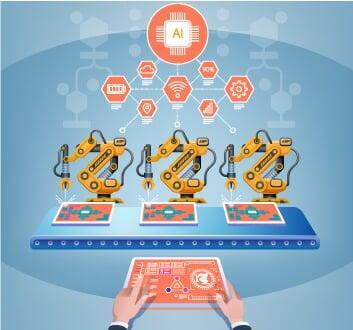Using IIoT edge
What does edge mean?
"Edge" is a cloud computing paradigm where rather than sending data to the central network for analytics performance, each device processes it locally.
Data processing
Information is selectively forwarded to the central hub including exceptions, highlighting trends, and summary data. These efforts reduce the need for computing and bandwidth power, as well as other IT infrastructure.
25% of the audience uses edge computing technology
According to Lauren Horwitz, the managing editor of Cisco, a major network devices supplier.
More than 50% plan to implement it within two years
According to Gartner conference on edge technology
Benefits of optimized analytics
It's possible for manufacturers to receive all the benefits of optimized analytics with accessibility in a centralized location without the need to sift through endless amounts of data aggregated at every site.
Under most circumstances, this data indicates that the process is running as they would expect. The data collection is also something manufacturers can worry less about because it travels with them from site to site, thus allowing them to make decisions no matter their location.
What kind of data is good candidate for edge processing?
The best data for IoT Edge processing is those "must-process" pieces of information that can occur locally.
Every other piece of intelligible high-level data, like uptime and production counts, for example, should pass directly through the cloud.
It's possible for users to work with data in the cloud, as well as edge-analyzed data.
Gain control over your manufacturing execution
Want expert evaluation of your IIoT needs?

DISCOVER OPPORTUNITIES TO BE EFFICIENT
Data from your equipments will provide valuable insights
FREE Assessment
Signup for a free assessment






